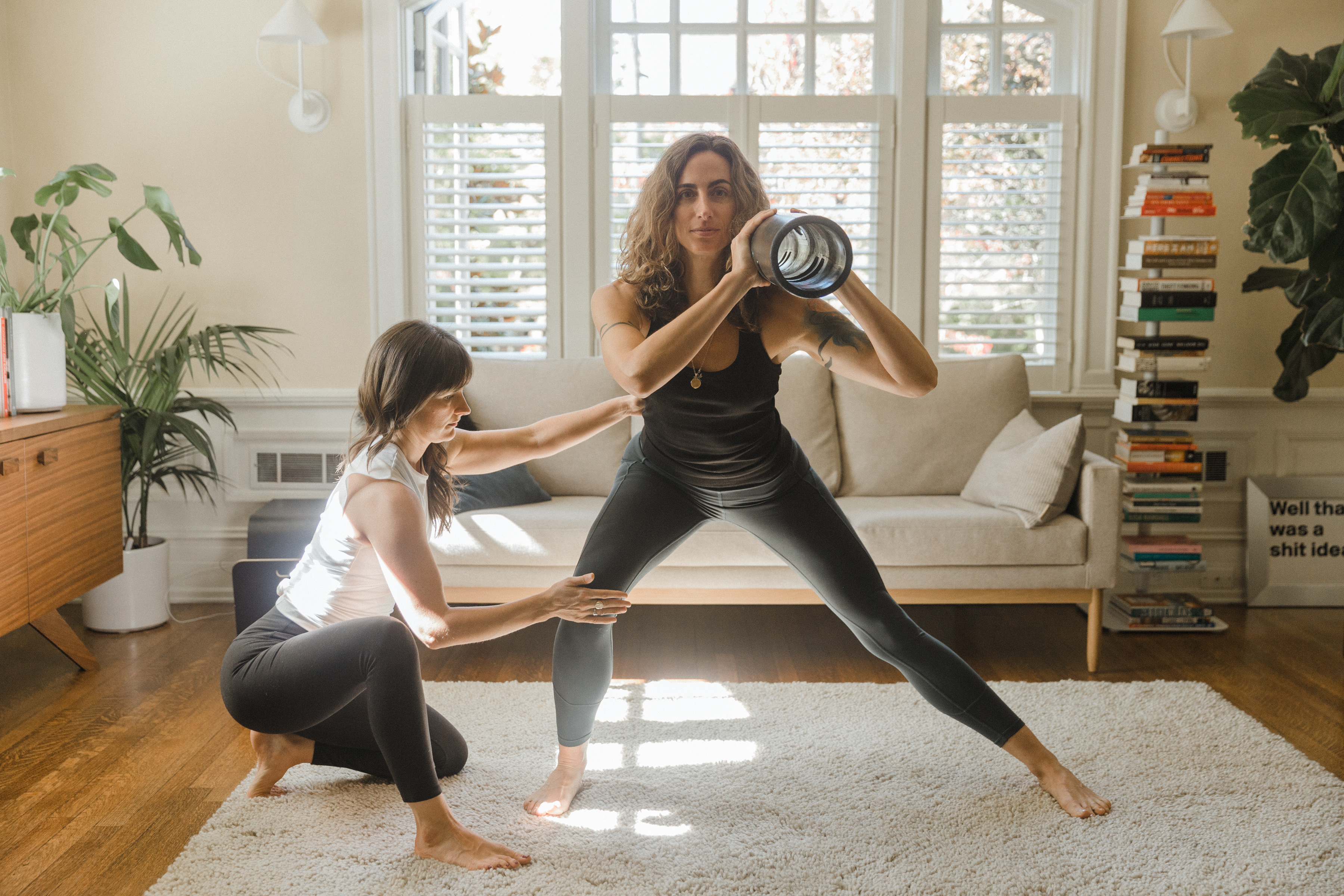
I’m a sucker for a sleek and minimal athletic shoe. After all, the footwear industry claims they’ll make you run faster, lift heavier and crush your next workout.
I choose mine purely based on lightness, comfort, and color (black, just like everything else I own).
My current pair got me stopped in the grocery store. ‘Excuse me, where’d you get your shoes?’ (obviously Nike) After asking if I liked them for my workouts, I felt the urge to expand on why I don’t train in them which led to a conversation around the concept of barefoot training in the middle of the milk aisle.
Have you seen those people in the gym working out without their shoes on and wondered why they would do something so unsanitary? There is a reason.
One of the first things I assess in people is how well their body moves, especially the ankles, feet, and toes and in turn, assess what response happens up to the chain as they go through a movement pattern. If you were to poke your head into any one of my training sessions, every single client is doing some sort of work barefoot at some point during their session, if not the whole thing.
Why Should You Train Barefoot?
Your feet are the foundation for your entire body and are rich with 100,000 little nerve endings that are the very first sensory input to the brain for your movement which provides feedback on your alignment and body positioning. It is the one body part that connects you to the ground and transmits force and energy to the rest of the body, all day long. Yet, we rarely pay attention to them. We shove (and sometimes squish) them into shoes and go about our day. The majority of shoes eliminate the work that our feet are meant to do which encourages us to compensate in our movements leading to weakness in the muscles, tendons, and ligaments along with a decrease in mobility. You might be surprised at how little connection you might have!
How Well Do Your Feet Move?
First, try this:
Sit down on a chair or the floor and hold your shin stable with both hands. With your shoes off, flex your foot as much as you can and take your ankle into the biggest, most controlled, slow clockwise circle you can and then reverse directions. Is it smooth? Are there jumpy or crunchy sections? Do the arches of your feet or toes feel like they want to cramp? Try your other foot, too.
Next, try this: Stand up tall with your socks off. While keeping the base of your big toes, the base of your pinky toes and heels firmly planted into the ground like a tripod, can you:
- Press your outer four toes down and actively lift only your big toe up as high as you can without the other toes following or rolling to the outside of your feet? Be honest.
- Press the big toes down and lift the outer toes up simultaneously without letting your big toe lift or letting your feet roll in?
- Lift all your toes up and tap and press only the big toe down?
- Keep your big toes lifted and tap your outer 4 toes down?
- And can you lift all toes up, spread them wide and slowly piano your toes back down from pinky toe to big toe in a controlled manner?
So do you have access to the intrinsic muscles of your feet? These muscles affect how the rest of the body moves. It’s all connected.
Start Small
Don’t just go get rid of your shoes and do all your activities barefoot. There is a time and place for them and I recommend you start small. Gradually increase your intensity and duration of being barefoot. That may mean you start simply with spending more time barefoot around the house.
Depending on the amount of time you currently spend barefoot, your feet may be sore as you introduce this work and they start waking up. And depending on the mobility of the nearby joints (ie: ankles), you may need to wear shoes in certain loaded exercises while working on improving that particular joint mobility before attempting barefoot while load bearing.
Start with just the warm-up or perhaps just a few of the exercises in your workout and gradually build from there.
Keep your shoes on for high-intensity work, running, jumping, etc, unless you’ve already built your way up to that.
And when you’re home, always go barefoot or wear socks, and avoid solid-soled slippers or shoes.
When you can begin to engage your feet actively with the floor, you’ll start to see a greater connection to the rest of the body, improved body mechanics and injury mitigation.
Note: training barefoot all the time is not for everyone. I encourage you to get familiar with the strength and mobility in your feet, ankles, and toes and go from there. Start slow and listen to your body. Begin with movements where both feet are planted and continuously monitor your form and alignment.
Let Me Know
Have you tried training barefoot? What other adjustments have you made to your training to support your mobility and mind-body connection? Share your favorite tips in the comments below — others in the community might benefit from your training tips!
Come connect with me on Instagram @running_with_forks



